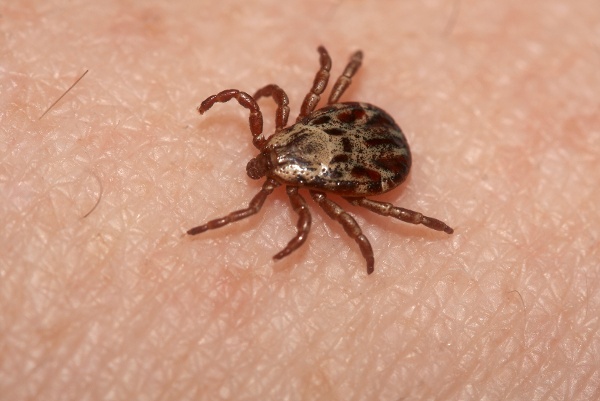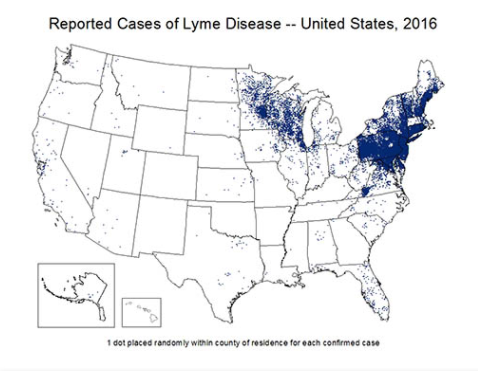Every summer we hear about tick populations on the news and how many people get Lyme disease. Yikes! The summer of 2018 is looking good for ticks and maybe not so good for us, so we’ve compiled the latest information you need to know about ticks and how to keep them away from you and your family!
1. The weather can affect how many ticks will be out in any given year.

Similar to many other insects, tick numbers in any given year are heavily dependent upon the weather. This past year’s winter saw subzero temperatures in New Hampshire and New England; this could have reduced the tick population, but unfortunately our cold temperatures came with a lot of snow, which provided insulation for the ticks. This year’s rainy spring also may contribute to a larger than usual tick population this summer.
2. Prevalence of Lyme disease is increasing, and particularly so in New England.
Did you know that in 2017, according to the Center for Disease Control, there were almost 30% more cases of Lyme disease than there were 10 years ago? Unfortunately, a significant number of those cases occur in New England. 95% of all Lyme Disease cases come from just 14 states in the US, and those 14 include all 6 New England states. Check out this graph from the Center for Disease Control. Scary!

3. You can reduce your chances of getting ticks on you by following some basic protective measures.

Firstly, you should know where ticks live. Ticks live in moist and humid environments, in wooded and grassy areas. If you know you are going to be in an area where there might be ticks, take a few easy precautions. Wear clothing that covers your body and cover all exposed skin with a strong bug repellant. Your clothes can also be sprayed with certain types of bug repellant as well for extra protection – check out this page for more specific info on this.
4. You can create tick safe areas on your property.

This actually isn’t very difficult! Your main goal is to clear tall grass and bushes around where you will be spending your time. Clear all potential debris where ticks could hide, use wood chips and rocks to create distance from potential areas where ticks could be, and mow your lawn frequently. The CDC provides excellent, specific guidelines for how to do this!
5. Check for ticks frequently – if a tick has not been on you for very long, your chance of getting Lyme Disease is much lower.

This means that every time you may have gone into an area where there could be ticks, you should check yourself when you come home. Use a full length mirror and check ALL parts of your body, including in your hair, in your belly button, on your back, etc. Adults should help children with this and you should also thoroughly search any pets which have been with you. If you find a tick, remove it immediately with fine-tipped tweezers, sanitize the bitten area, and dispose of the tick by flushing it down the toilet. See this page for more information.
Thanks you for reading! Want to read more great content about healthy lifestyles, New Hampshire, and more? Click below to subscribe to our blog!



